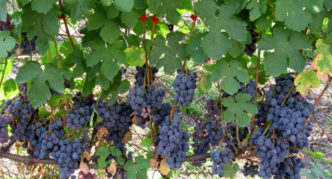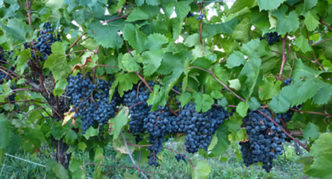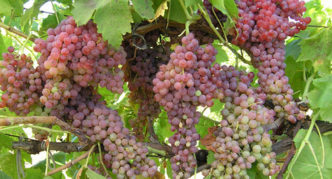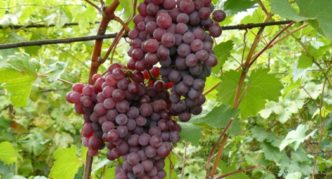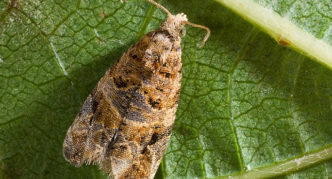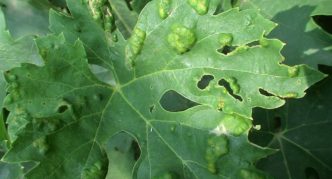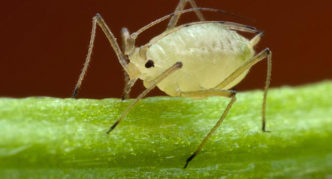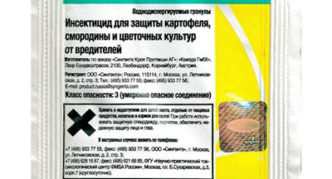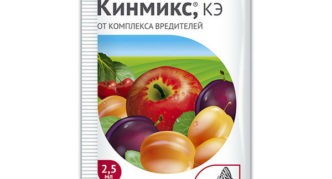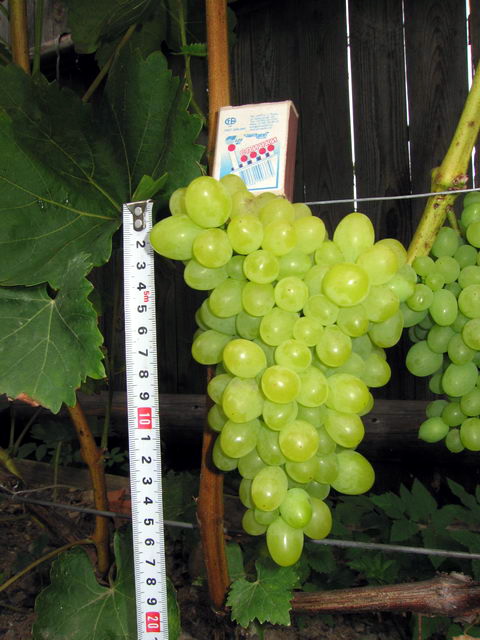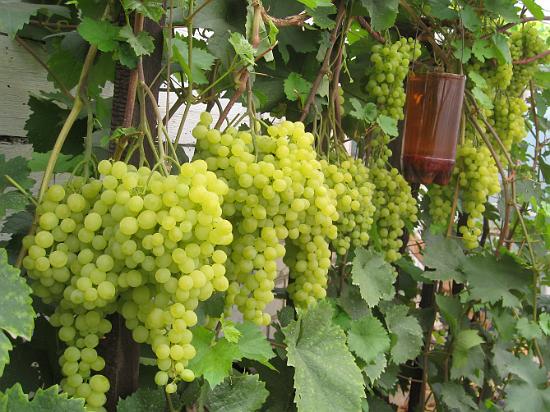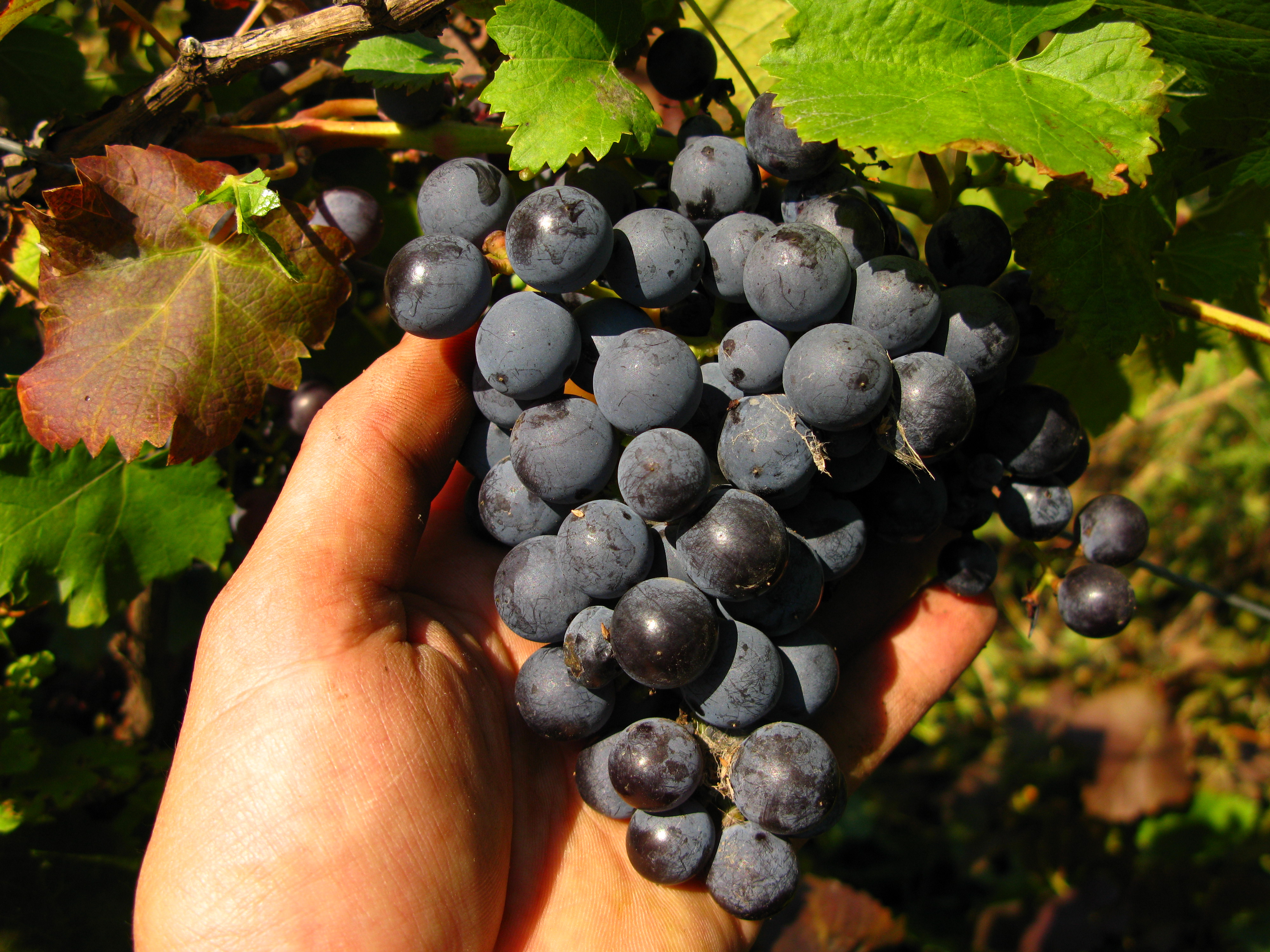Among the many varieties of grapes existing today, there are several, in the names of which the word "Russian" is used. These are Russian early, Russian violet, just Russian, Russian amber and Russian Concord. They have been known to winegrowers for a long time, they are confidently called varieties, but of them only Russian amber has been tested by the State Variety Commission since 1987 and in 2004 was included in the City Register with a recommendation to grow it in the central Black Earth Region. Therefore, it can rightfully be called a variety, the rest should officially be called hybrid forms. We are interested in the first 2 of the named grapes - Russian early and Russian violet.
Content
The history of the creation of forms Russian early and Russian violet
The hybrid forms Russian early and Russian violet were obtained by breeders by crossing Michurinets and Shasla severnaya grapes. Both parental vines in their genealogy have wild Amur grapes, from which they have adopted resistance to diseases and severe frosts. They passed on these qualities to their descendants.
Photo gallery: Russian early and Russian violet and their "parents"
- Russian purple in color resembles Michurinets grapes
- Michurinets formed the basis for the creation of hybrid forms of Russian early and Russian violet
- Shasla grape severnaya also took part in the creation of the Russian early and Russian purple
- Early Russian grapes are similar in color to Severnaya Shasla
Description and characteristics of the Russian early
This table grape was bred by a breeder from Novocherkassk, Yakov Ivanovich Potapenko.
The vine, which received the name Russian Early, fell in love with winegrowers and gardeners from different regions. It is grown in the Far East, Siberia, and the north-west of the country, and everything that the people love, it gives its emotionally colored names. For the beautiful color of ripe pink berries, which distinguishes this form from others, in the name of which the word "Russian" is used, this grape is called Russian pink, and for the caramel flavor of berries - Candy or Children's grapes.
After the first buds bloom on the vines of the Russian Early, you can start harvesting in 105-115 days. The bushes of this grape are strong or medium-sized, have bisexual flowers, which significantly improves pollination regardless of the weather, and therefore increases the number of ovaries.
When ripe, conical, not very dense bunches of this variety gain weight from 200 to 400 g.
Each dark pink round grape weighs 3-5 g and has an average size of 21x23 mm.By the time of harvest, they accumulate from 17 to 21% sugar and 6-7 g of acid in 1 liter of juice. Sweet, ripe berries, as already mentioned, have a caramel flavor.
The early Russian grape has good resistance to winter frosts - up to -23 ° C, therefore, in regions where it does not threaten more severe cold, it can be grown in a non-sheltered form on gazebos, tents, near buildings.
Russian early is resistant to both varieties of powdery mildew and gray rot; it is also not affected by ticks. Preventive treatment with fungicides or insecticides is recommended only if a disease or parasite is detected on other varieties.
The harvested crop can be transported over considerable distances without loss.
Video: Russian early grapes
Description and characteristics of Russian purple
Russian violet was bred by the oldest institution in its industry - the Michurin All-Russian Research Institute of Genetics and Selection of Fruit Plants.

Russian violet was bred by the Michurin All-Russian Research Institute of Genetics and Breeding of Fruit Plants
The fruits of the Russian violet are indeed darker than the early ones. Once the growing season begins, the vines can be harvested after 115 days. By design, these grapes are classified as table grapes, that is, it has a pleasant taste and presentable appearance of the bunches.
Bushes of medium height, shoots grow by 1.5 m per season and ripen well. The flowers of the Russian violet are bisexual, so pollination occurs seamlessly regardless of the weather. Conical bunches of Russian violet are classified as large in mass, on average they weigh 300-400 g. Dark blue oval grapes are also not small - their average weight is 4 g. Ripe very juicy berries accumulate 20-23% of sugar, which allows not only to use fresh grapes, but also to make wine from them. According to the observations of winegrowers, a four-year-old bush can produce up to 8 kg of berries.
Under appropriate conditions (temperature -1 ... 0 ° C, relative humidity up to 90%), the crop can be stored for up to 3 months. Russian violet tolerates winter cold well. According to various sources, its frost resistance is within -23 ... -26 ° С. This determines the vastness of its cultivation area. In various localities, it is cultivated in a non-sheltered or sheltered form, depending on the minimum winter temperatures.
This grape has excellent immunity to fungal diseases, but it is prone to cracking berries and is actively affected by wasps.
Planting Russian early and Russian purple
These hybrid forms of grapes are very undemanding to soils, but the best result is obtained by growing them on floodplain soils and irrigated chernozems. It is impossible to grow them, like any other grape, on saline or waterlogged soils, since the roots in such places do not have sufficient oxygen access.
You can plant seedlings in spring or autumn. A place for spring planting is prepared from the fall of the previous year, for autumn planting - in the summer, but no later than 1.5-2 months before planting. Planting holes are made at a distance of about 3 m from one another. Depending on the quality of the soil and the local climate, they are dug in size and depth from 50x50 to 100x100 cm.The holes are filled using conventional technology:
- the bottom layer on soils that do not absorb water well - drainage:
- broken brick;
- gravel;
- crushed stone or similar materials.
- above - a layer of rotted manure or compost (2 buckets), mixed with the soil;
- to the top, the pit is filled with fertile soil.
In areas with insufficient amount of active temperatures for good ripening of grapes (the sum of average daily temperatures per year, exceeding certain indicators required for a particular plant), various methods are used to increase it:
- watering the grapes with warm water, for which they dig special pipes into the ground, the lower edge of which reaches the bottom of the pit;
- to prevent the penetration of cold from the lower layers of the earth to the roots of the plant, scraps of boards are laid on the drainage;
- stones protruding on the surface are placed around the plant or bottles of dark glass are put in, which, heating up during the day, will warm the plant and the soil at night;
- grapes are planted on the south side of the building or a shield is installed on the north side of the plant so that the sun's rays are reflected from them and additionally warmed the vine;
- the soil is formed in the form of a mound near the stem of the plant, on the southern slope of the earthen elevation, a black film is fixed, which, accumulating the temperature from the sun's rays, will additionally warm the soil.
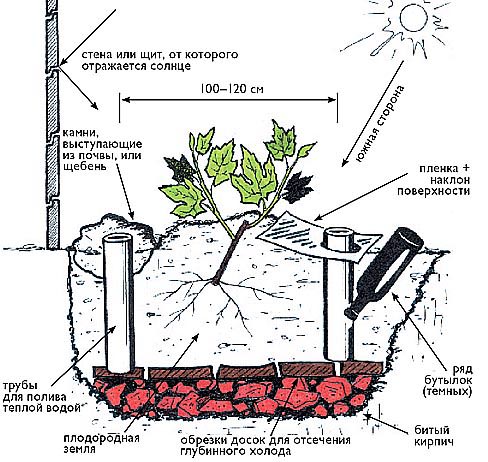
In areas with an insufficient amount of active temperatures for grapes, various methods are used to increase it.
The first week after planting the grapes, on days with a bright and hot sun, the vine should be shaded.
When planting in autumn, a young plant is covered with a cut plastic bottle, in which holes are made for ventilation, and a mound of soil about 0.3 m high is poured around it.For the winter, this whole structure is insulated with spruce branches, hay and other covering materials.
Care features
Almost all operations for the care of the Russian early and Russian violet do not differ at all and are carried out in the same way as for other varieties of this plant. Unless the organization of watering will require special attention. For the Russian early and Russian violet, reasonable watering is extremely important:
- at the time of blooming leaves on the vine;
- during and after flowering;
- during the development and ripening of berries.
For both forms of grapes we are considering, the following points are important:
- the frequency of irrigation is not as significant as the depth of soil moisture, which should be at least 0.5 m, that is, by 1 m2 the trunk circle consume about 5 buckets of water;
- 2 weeks before harvesting, watering should be stopped so that the berries do not burst;
- the vines should not be irrigated (spray the bush itself with water) during the period from the appearance of buds and during the entire flowering period, otherwise the flowers will crumble.
Watering methods can be used in different ways:
- in furrows along a row of grapes;
- into the annular grooves near each bush;
- into the trunk hole.
If the plants are watered from a bucket, then each new portion of water is poured in only after the soil has completely absorbed moisture.
Regardless of the irrigation method, the soil under the grapes is loosened after absorbing water, thereby improving the flow of air to the roots. Grooves or furrows can be covered with dry soil to keep moisture in the ground longer.
Pest control
The grapes are usually affected by:
- phylloxera;
- aphid;
- bunchy leafworm.
Upon detection of the first signs of the appearance of pests, the vines are treated with drugs:
- Aktara;
- Kinmix;
- Actellic or the like.
Processing is done in accordance with the instructions given, as a rule, on the packaging. For the complete destruction of all generations of pests, this procedure is carried out twice more with an interval of 7 days.
Photo gallery: grape pests
- The bunchy leafworm is a pest of grapes
- Phyloxera parasitizes grapes
- Aphids also attack grapes
Photo gallery: drugs against pests
- Aktara drug protects grapes from insects
- The drug Actellik fights pests
- Kinmix is also used in the fight against insect pests of grapes
Advantages and disadvantages of hybrid forms
In order to adequately assess the advantages and disadvantages of Russian early and Russian purple grapes, we turn to the State Register and select a couple of varieties that have the same ripening times and are recommended for cultivation in all regions. This can be, for example, Tenderness and Alyoshenkin's gift, popular among winegrowers.
Table: comparative characteristics of varieties and hybrid forms of grapes
| Russian early | Russian purple | Aleshenkin's gift | Tenderness | |
| Bushes size | Strong or medium-sized | Medium-sized | Medium-sized | Vigorous |
| Color functionality | Bisexual | Bisexual | Bisexual | Information not found |
| Average bunch weight (g) | 200–400 | 300–400 | 550 | 370 |
| Grape weight (g) | 3–5 | 4 | 4–5 | 7 |
| Sugar in ripe berries (%) | 17–21 | 23 | 16 | 18–20 |
| Acids (g / dm3) | 6–7 | 7 | 8,7 | 6,6 |
| Tasting scale score (points) | 9 | 8,9 | 7 | 8,5 |
| Productivity (average t / ha) | Information not found | Information not found | 8,5 | 12,4 |
| Harvest from an adult bush (average kg) | Up to 25 | Information not found | ||
| Low temperature resistance (° C) | -23 | -23…-26 | -26 | -22 |
| Disease and pest resistance | Increased | Increased | Increased | To mildew 3-3.5 points, to mildew, gray rot, pests resistant |
From the information collected, it can be seen that the early Russian and Russian purple bunches are smaller than those of Alyoshenka's gift, but the taste of the berries is better and surpasses Tenderness in this indicator, which is also inferior to them in terms of disease resistance.
Reviews about Russian early and Russian purple
It seems to me that the Early Russian has no shortcomings at all. It simply cannot be placed in a row on a one- or two-plane trellis. There he will not show himself in all his glory. A large shaping is suitable for him, such as a gazebo. I bought cuttings of an early Russian from our winegrower, where he grew up on a gazebo. I can't say for sure the weight of those grapes on the gazebo, but, as it seemed to me, at least 70 kg. It was said about the taste here, I will not repeat myself, but the marketability of the variety in our region can be argued. Early Russian matures almost simultaneously with Saba Pearls, they also enter the market at the same time, and the demand is higher for Early Russian, since it is larger. In our city, the grape market begins with these varieties.
Yesterday (08.16.2015) at V. Elistratova's plot (B. Glushitsa village), the sugar content of early varieties and GF of grapes was measured. We present the results of measurements: ... GF 14–75, Kishmish Luchisty, Tomayskiy, GF 342, Augustin, Timur, Russian early, Zolotinka - 19 brix. Zhuravlik, Candy, Pleven Muscat - 20 brix. Delight - 22 brix. Diseases are absent, but several leaves in 2 bushes are affected with itching. Preventive treatments of bushes against diseases and pests were not carried out.
I have been growing Russian violet for 25 years. Large bunch with wings, medium-sized berry, ripens in mid-August. Good resistance to frost and disease. Muscat is not in it. Early purple with strong nutmeg, and never disappears in it. The bunch is not large, the berry is much smaller than that of the Russian violet.
Russian Violet was bought last year, dug in the middle of summer, brought and planted on my site. He was at that time two years old. He started well and continued growing until autumn. Overwintered covered with snow, though 50% of the eyes froze and did not wake up. But this did not prevent him from early in the spring, one of the first to start growing young shoots, bloomed late, at the end of June. I left all the bunches, I did not cut a single one (although I don’t know why they claim that a bush transplanted to a new place is considered as an annual one), there were 15 bunches. On August 2, the berries began to color. What is the taste, it’s interesting to see why someone uproots it? Are the conditions and taste of the berry mediocre? I'll find out myself soon by trying the berries.
Early Russian and Russian purple are not in vain loved by winegrowers in different parts of the country. Without creating additional problems when growing, they repay the gardener for their care and work with a good harvest of delicious berries. Novice winegrowers are often recommended these very forms to gain the necessary experience and improve their skills.
